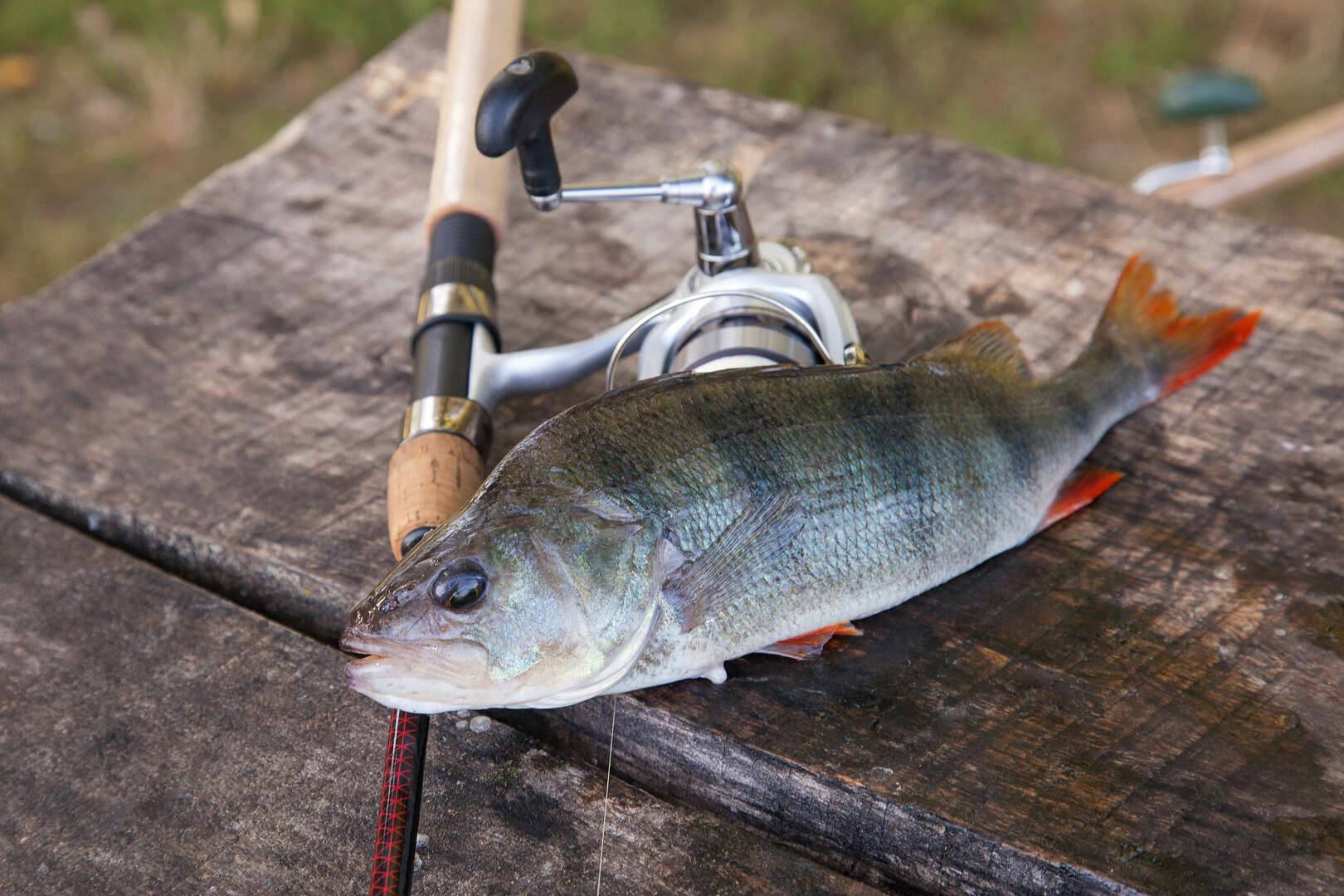In Search of Perch

In Search of Perch
By Steve Weisman
It’s time to target yellow perch. Known as a school fish, it is easy to tell if the perch are starting to bite by searching for an armada of boats bunched closely together. Although perch populations are scattered throughout the Hawkeye state, the lakes of northern Iowa most consistently produce perch. Mike Hawkins, DNR Fisheries Biologist at the Spirit Lake Hatchery, says, “We are really at the southern range in search for yellow perch here in northern Iowa. They are more of a cool water fish.” Normally, when we talk perch fishing in northern Iowa, it comes down to the Iowa Great Lakes chain. That doesn’t mean that there won’t be lakes (many times shallow) that will all of a sudden one year become a big perch producer. I think we have all seen that happen, and anglers come from near and far to cash in on the search for jumbo perch. Then they are gone. As Hawkins says, everything just happens to align perfectly to make this type of bite happen. Then it might be years before it happens again. Since you never know where or when this will happen, it’s good to keep up on the fishing news across northern Iowa with baitshops and DNR fishing reports being two good choices.
One of the biggest things to remember about perch is that when they are minnow size, they are exactly that: forage for other predators. So, it is possible to have a huge year class in that first year, and they end up being part of the food chain and the year class never becomes the blockbuster year class. At the same time, perch are highly cannibalistic and will utilize small perch as part of their own forage base. “What anglers must always remember about perch is that they are a cyclic fish with a lifespan in our area of about 6 years. For that reason, there will be that phenomenal year of fishing followed by a decline.” As perch move toward the end of their lifespan, they become susceptible to outside elements such as hot weather stress, blue-green algae blooms and bacterial infections. As a result, die-offs can occur because of these outside elements.
Lakes to target
Hawkins also notes that some of the shallower lakes that are being rejuvenated through the shallow water lake management restoration initiative have the potential to be good perch producers. The following are either renovated or in the process: Diamond Lake, Dickinson County; Pickeral Lake, Buena Vista County; Lizard lake, Pocahontas County; Virgin Lake, Palo Alto County; Trumbull Lake, Clay County; West Swan Lake, Emmet County.
Probably the most targeted lake is Big Spirit Lake. Year in and year out more anglers fish Big Spirit than any other lake, because it annually offers the most perch angling opportunity. At the same time, West Okoboji offers good perch fishing (although you have to battle pleasure boaters until after Labor Day) and sometimes East Okoboji.
Even though we’re on the back side of a huge year class on Big Spirit, ice fishing was still fair-to-good last winter and Hawkins believes perch fishing will be reasonably good heading into this fall.
Living on the east side of Big Spirit puts me right in the mix when it comes to finding perch. There seems to be two different bites: the basin and the weeds. Obviously, the basin is easier because you don’t have to fight the weeds. It’s a clean bottom and there is nothing to hang up the lures. The problem is the basin is one huge area. Where do you start? Personally, when I fish the basin, unless I know people are catching perch, I will target the basin with nearby structure (humps, rock piles or weeds). Since these schools meander and move around, this at least gives me a starting point. Often, the schools of basin perch are feeding on bloodworms, larvae of what will become adult midges. The bloodworms feed on bacteria in the mud and make for an easy meal for schools of perch.
Often if it is relatively calm, I will drift and use my Humminbrd 998 SC to help me search for perch. Once I find them, I will anchor over the top or drift along with the school. Most of the fish taken from the basin are caught within a foot of the bottom, so whatever presentation you use, target that part of the water column. I have seen on occasion where the schools are so huge that part of the school might be several feet off the bottom. In that case, I have caught perch several feet off the bottom.
Presentations:
Most of the time anglers will use light tackle while in search of perch. I usually fish with four-pound Berkley XL line and an ultralight rod and reel. Common baits include silver wigglers, wax worms, meal worms, Belgium worms, small leeches and minnows. Each day can be different, so I always make sure to have a good variety of bait. Some people like to use a slip bobber with a plain hook or tiny jig just off the bottom. I prefer straight lining right over the side of the boat, so that I can actually see and feel the bite.
When straight lining, my two favorite lures are the tube jig (mini jig) and the Shuck’s Jigger Minnow (shuckslures.com/jiggerminnow.html). Both work well, but on a given day, one may be better than the other. Thus, I always start out using both until I find a pattern. However, I do think that for the most part, the Jigger Minnow is king when it comes to perch fishing at the Iowa Great Lakes. What I like about the lure is that it is heavier than a lot of lures so it gets to the bottom quickly, yet it fishes light. I will put silver wigglers, wax worms, meal worms or Belgian worms on to help attract the perch. With more than one person in the boat, we will all use different baits until the perch tell us what bait is hot. Most of the time I fish with a mini jig on one line and Jigger Minnow on the other.
One of my favorite presentations is to drop the Jigger Minnow all the way to the bottom and let it hit the bottom. Then I will bring it up just off the bottom (a few inches) and jiggle, jiggle, jiggle the lure. This provides flash while at the same time it gives the chain and hook an often-irresistible wiggle.
If nothing happens, I drop the lure on the bottom, jig up, drop it on the bottom, jig up and drop it on the bottom. What I am attempting to do is poof the sand to attract the perch. By golly, many times this will result in a bite.
>Be forewarned, the Jigger Minnow will attract a variety of fish: perch, bluegills, crappies, yellow bass, white bass, largemouth bass, smallmouth bass and walleyes. I’ve caught them all on the Jigger Minnow.
The other option is to go to the weedlines or fish over the tops of the weeds. This is tougher fishing than the basin, because you are contending with the weeds. However, weeds mean fish. Earlier this past summer I went out fishing on Big Spirit with my grandson, Hunter. It was really windy out of the south, so we went up into the southeast corner and drifted over the weeds in 7-8 feet of water. My goal was to catch some perch or bluegills. So, I tipped a green and gold
Jigger Minnow with a Belgian worm.
As we drifted, I would move the bait up and down to match the height of the weeds, always trying to just keep in contact with but not in the weeds.
The first hit came about 10 minutes into our drift. It was more of a thump than a peck-peck, so I figured it might be a bass. To my surprise, as the fish came to the surface near the boat, I saw a nice 14-inch walleye. My grandson grabbed the net saying, “I’m the net man, grandpa.”
Sure enough, a little later, I felt another hit, this time a real thump and my ultra light rod bent almost in half. This was a big fish, something way bigger than a 14 incher. After several minutes, the fish came to the surface, a really nice ‘eye, a 21½ incher! Quickly it went back into the water. At the same time, I ended up picking up half a dozen perch during this trip.
This shows the versatility of the Jigger Minnow. If you are unfamiliar with the lure, the Jigger Minnow can be found at all of the area bait shops.
East and West Okoboji
John Grosvenor, of JTG Expeditions, a well-known guide on the Iowa Great Lakes for the past 12 years, targets East and West Okoboji perch. “I just love fishing these lakes for the variety that they offer my clients. From what I have seen over the past two years, there is an excellent perch population on these lakes right now. It’s just my opinion, but I think it has to do with the flooding the last couple of years. I know a lot of fish came from Big Spirit to East and West Okoboji in the high water.”
Grosvenor also finds the Shuck’s Jigger Minnow to be his top bait choice, along with tube jigs when in search for perch. “I like the Little Jigger because it gets to the bottom more quickly, and since I like fishing without a bobber (straight lining), you can feel the bite easily with the Jigger Minnow.
Grosvenor notes that on West Okoboji there is a deep, and I mean deep, perch bite. It’s not unusual to find huge schools in 60+ feet of water. Yet Grosvenor doesn’t target these fish. “When you catch perch in that deep of water, they won’t survive if you release them. For my clients, I just don’t think they have a lot of fun fishing that deep. The fish don’t fight very well, I kind of say it’s like reeling in a wet sock. Plus, I don’t feel that it is good for the fishery.”
Instead, Grosvenor targets the deep weedlines in 15-17 feet of water that appear in just about every bay on West Okoboji. “I’m also looking for harder bottom with rocky rubble. As we get deeper into the fall, I will move out away from the weeds.” Grosvenor uses this cliché “closer to summer, closer to the weeds.” Although Grosvenor really likes tiny tube jigs, he finds the Jigger Minnow works best for his clients. As fall arrives, he will go to minnows on a slip bobber.
When fishing East Okoboji, Grosvenor will again target the harder bottom areas in 10-14 feet of water while in search for perch. He will look for underwater structure and humps that might hold perch. In this shallower water, Grosvenor likes to cast tube jigs tipped with silver wigglers or wax worms.


